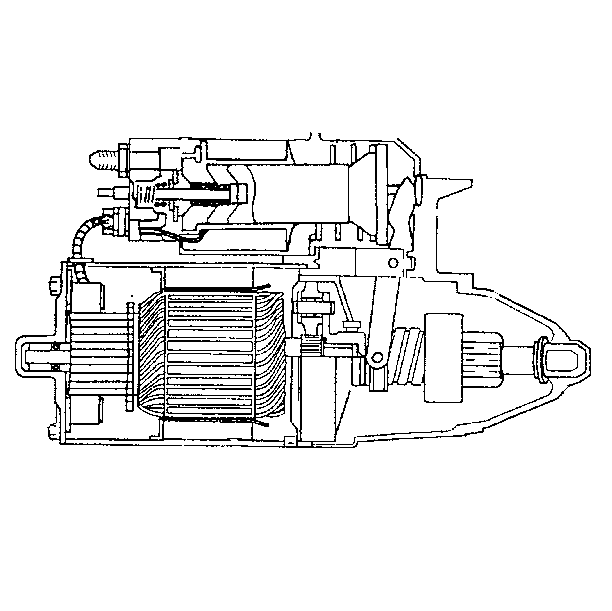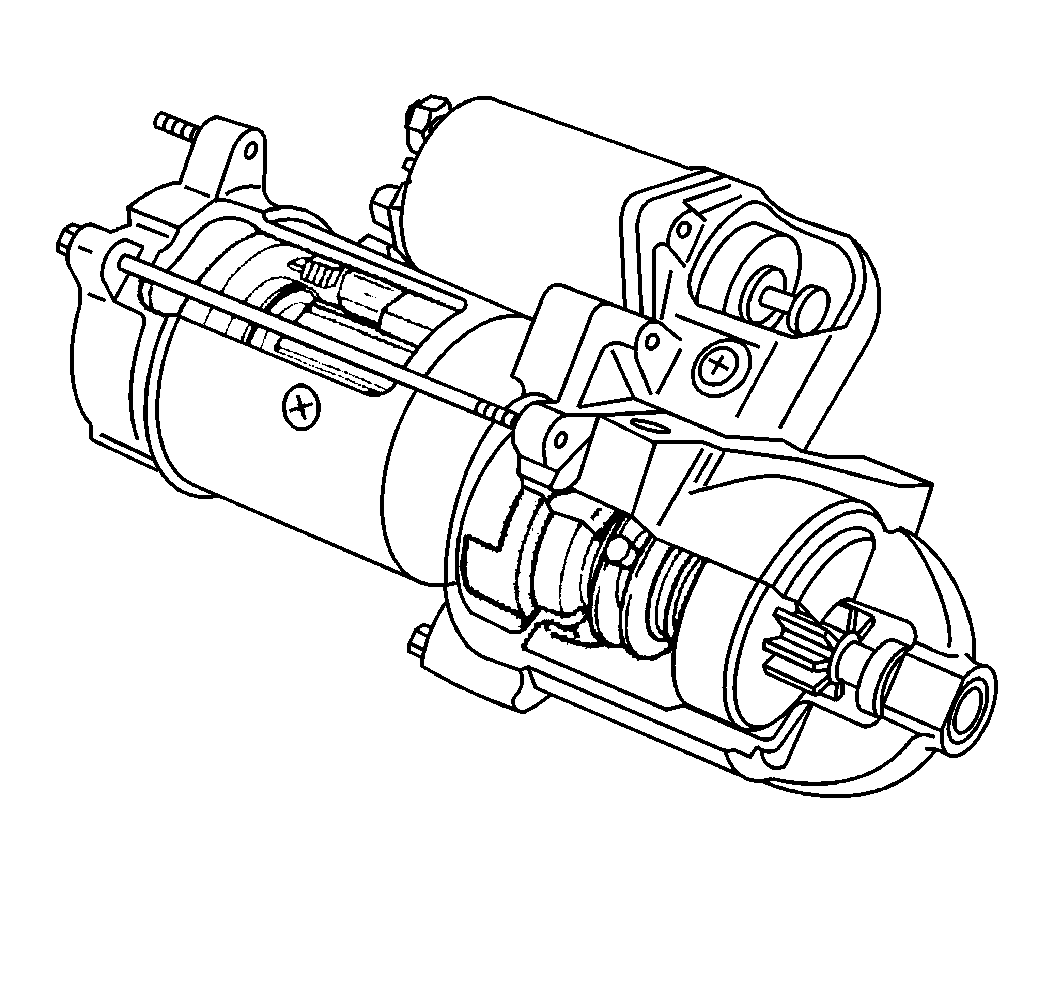Cranking Circuit
The cranking circuit consists of the following components:
| • | The battery |
| • | The starter motor |
| • | The ignition switch |
| • | The park/neutral position (PNP) and backup lamps switch (automatic transmission) |
| • | The clutch pedal position (CPP) switch (manual transmission) |
| • | The starter motor relay |
| • | All related electrical wiring |
For detailed schematics of the starting system refer to Starting and Charging Schematics .
Starter Motor
The gasoline engine uses a PG-260 starter motor and the diesel engine uses a 28-MT starter motor.
PG-260 Starter Motor

The PG-260 achieves gear reduction at a ratio of 5:1 through planetary gears. The motor's relatively small size and light weight offers improved starting performance and reduced current requirements for larger gasoline engines.
28-MT Starter Motor

The 28-MT, used on diesel engines, uses a gear reduction system in order to drive the pinion.
The armature shaft gear drives an internal gear at the gear-reduction end of the driveshaft at a speed of one driveshaft revolution for each 3.9 revolutions of the armature.
The starter has an over running roller-type clutch and an enclosed shift lever. The solenoid is sealed in order to prevent entry of foreign material.
The part number is stamped on a label attached to the field frame.
The PG-260 and the 28-MT both have the shift lever mechanism and the solenoid plunger enclosed in the drive housing in order to protect the components from the following:
| • | Dirt |
| • | Icing conditions |
| • | Splash |
The solenoid windings energize when the ignition switch is in the START position. The resulting plunger and the shift lever movement causes the pinion to mesh with the engine flywheel ring gear. The solenoid main contacts close, and the engine cranking takes place. When the engine starts, the pinion overrunning clutch protects the armature from excessive speed until the ignition switch is released, at which time the plunger return spring causes the pinion to disengage. In order to prevent excessive overrunning, release the ignition switch immediately when the engine starts.
